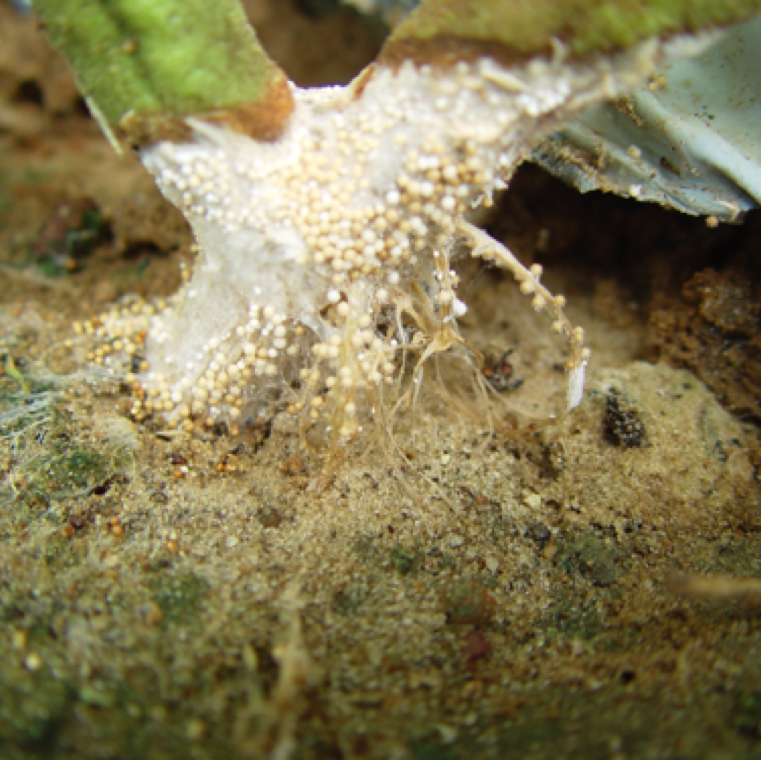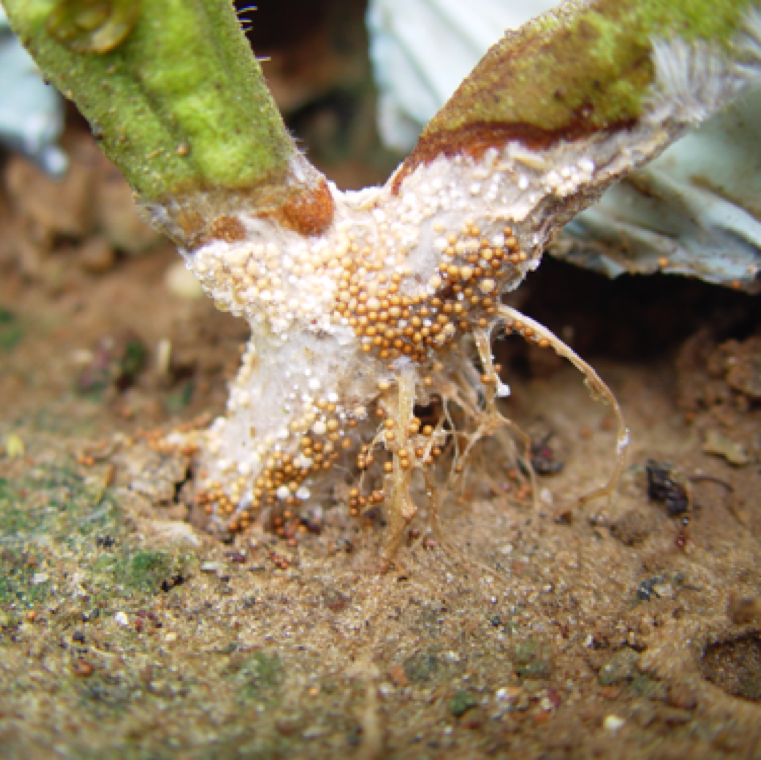

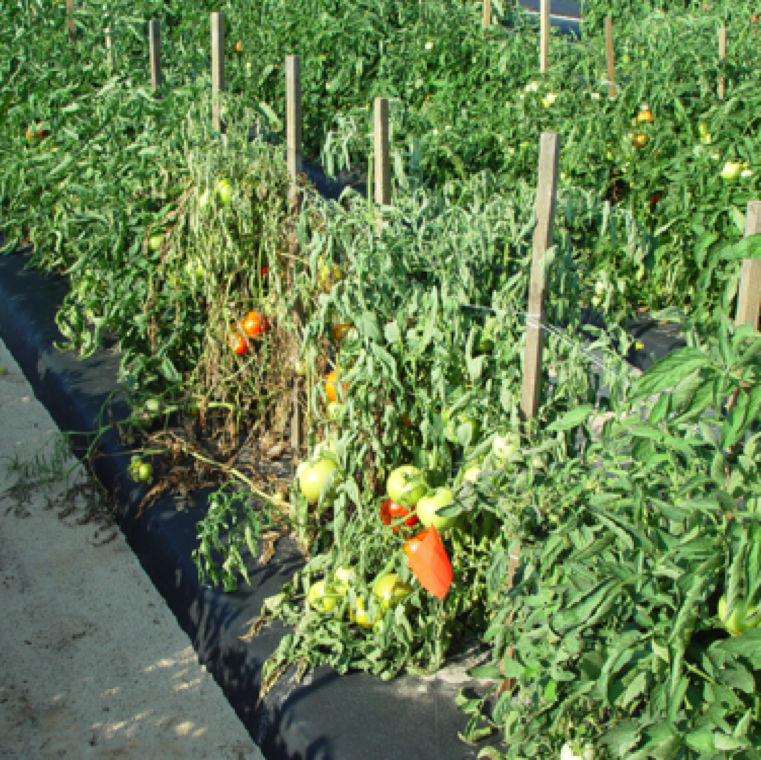
The onset of southern blight is favored by warm wet weather. In Florida, the disease is usually noticed during the spring season crop, and rarely during fall season crop.
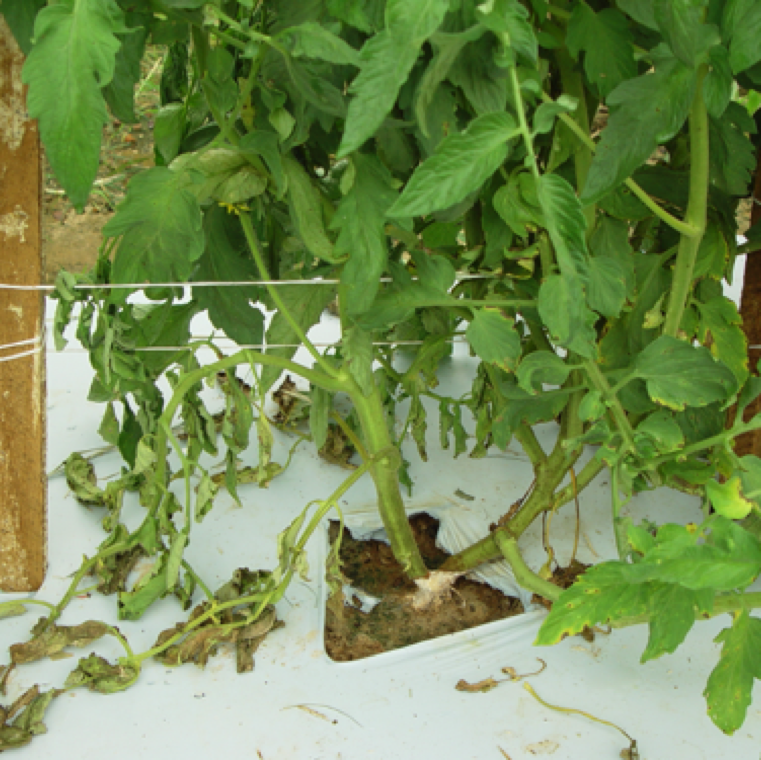
Plants affected by southern blight will exhibit initial wilting symptoms. If you look at the base of the plant at crown and on soil, you will see white fungal mycelial growth which is characteristic of the disease.
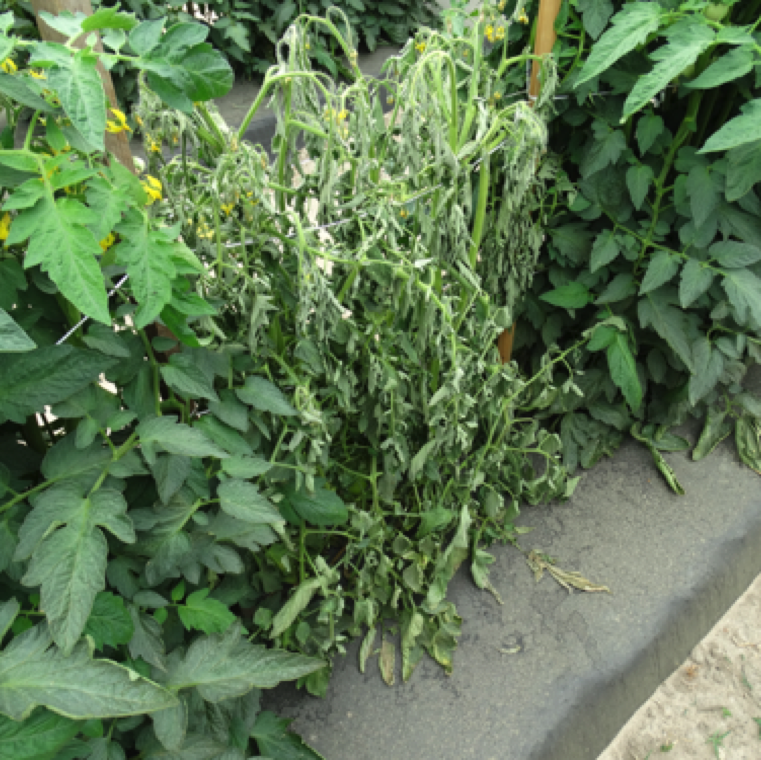
Wilting of plants can later become advanced with almost all the leaves flagged with no recovery of leaves from wilting. Bacterial wilt can also cause similar symptoms, but have no fungal mycelial growth.
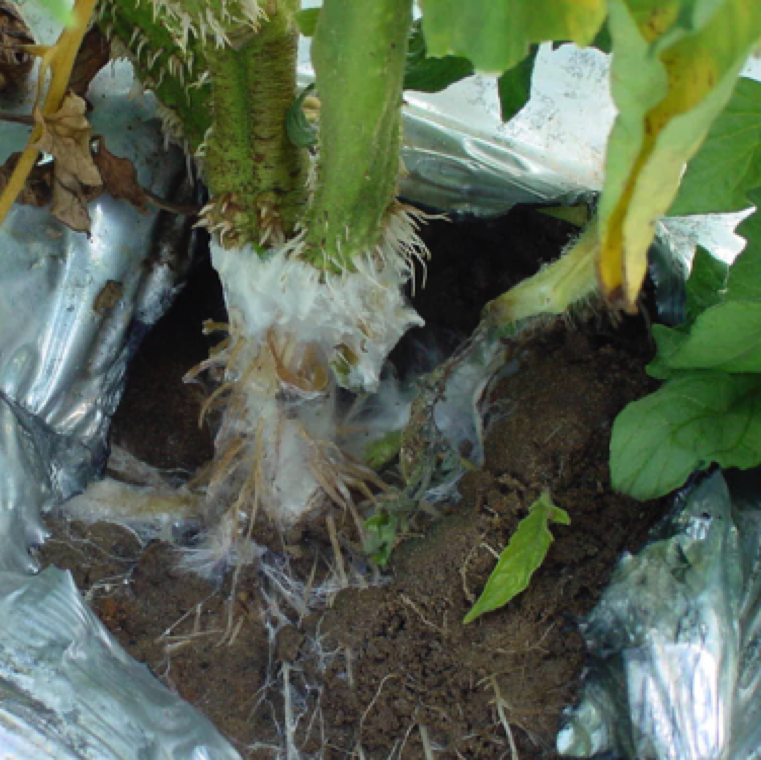
The fungal growth at the base of the stem will become much more thick and fluffy girdling the stem. This is a characteristic symptom of southern blight. Similar symptom may be noticed for Sclerotinia blight.
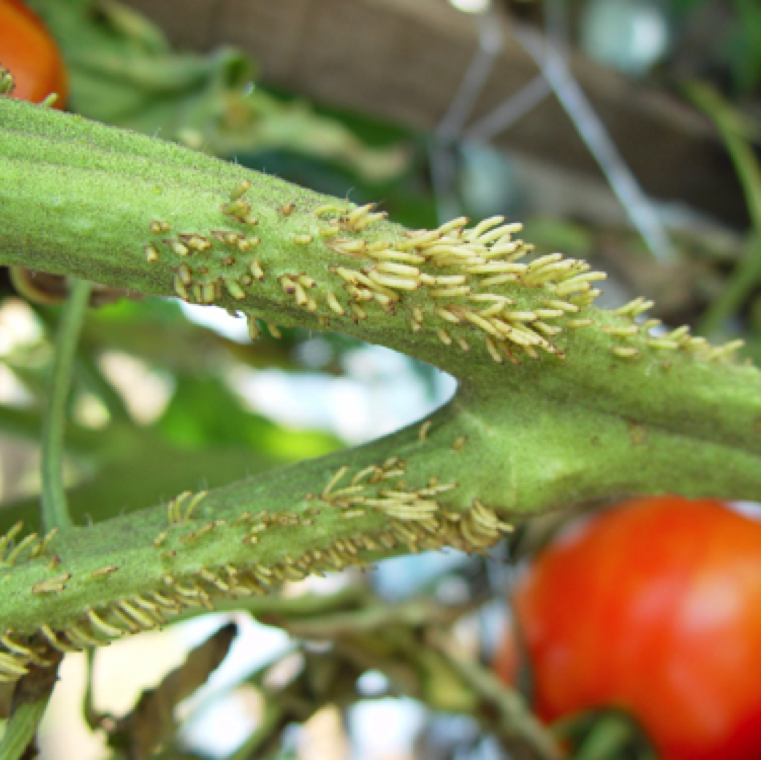
Plants affected by southern blight tends to have increased adventitious root formation. However, this can be a common symptom for plants stressed due to other biotic and abiotic reasons also.
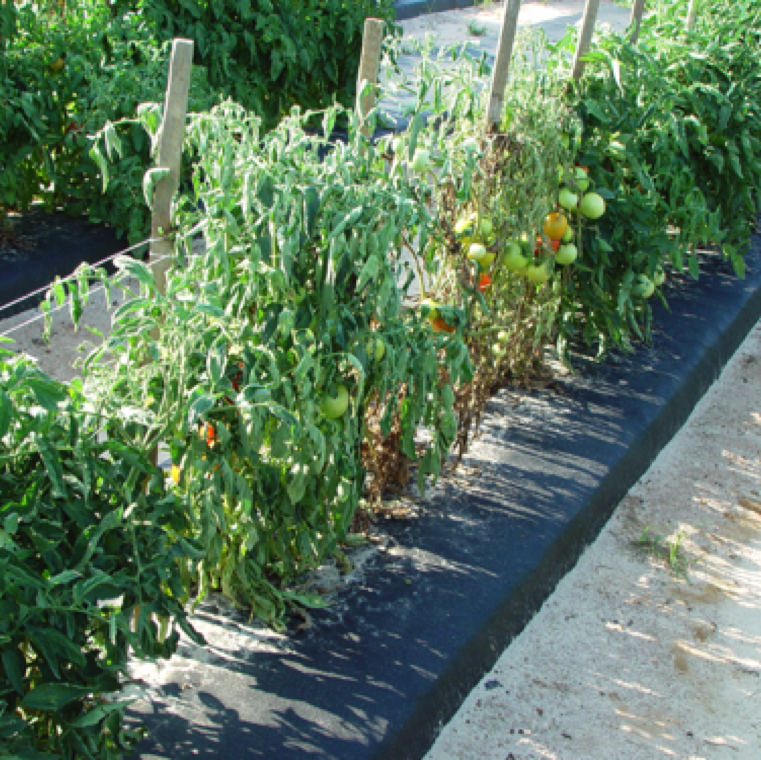
Southern blight causes premature ripening, and complete yield loss from affected plants. The disease is mostly spotty, but in rare cases, many plants can be seen affected within a section of the field.
SOUTHERN BLIGHT
Fungal causal agent: Sclerotium rolfsii
Tomato diseases
